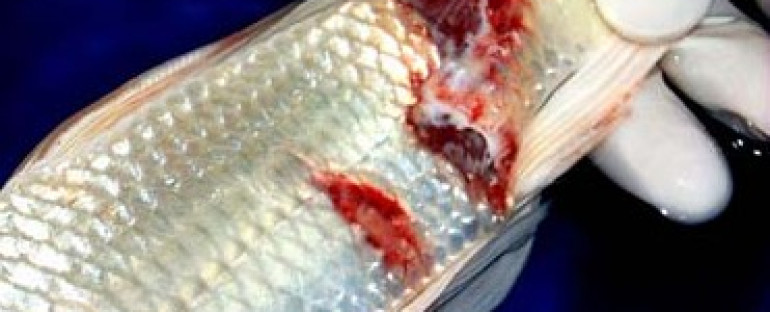26
Jan
Here are four easy to follow tips to keep your koi happy and healthy this Spring.
Raising or keeping koi isn’t the same as having other house pets. For example, what happens when your fish gets sick? You can’t just slap a leash on it and take it down to the vet for an examination. Most of the time, you become the vet, making diagnosis and prescribing treatment using your Google PHD. Although this method might help save a fish from a life threatening disease, the most effective care a koi owner can provide is prevention. By taking a few precautionary steps you can ensure that your precious little fishies have the chance to outlive you (which they can do, by the way).
Consider your water quality
Koi keep a layer of slime on their body as a natural defense system against parasites, bacteria, molds, and other harmful agents in the water. When the slime coat is compromised, the fish is susceptible to attacks by any of these bad “bugs”. The number one reason for a koi’s defense system to shut down is bad water quality. When the quality of the water degrades the fish begin to stress and stop providing the slime. This is when the fish become vulnerable. By maintaining a good standard of water quality, you are essentially preventing problems from occurring. Of course this will not stop all illnesses, but it will cover the majority of them. ![]()
Just add salt
Believe it or not, salt not only makes your fish taste better but it can also help them feel better. Non-iodized table salt (with no added minerals) is recommended to use as a medication for koi. Salt allows the fish to reinforce its’ slime coat with an extra layer, removing most of the critters that might be currently attacking the fish and defending it from any new ones. The recommended salinity level should be 0.3% and can be monitored using a salinity tester (available at Buck’s). At this level most plants will still thrive while some string algae strains will die. So it acts a little like an algaecide as well. The recommended dose is 3 pounds/100 gallons of water. The introduction of salt should be gradual, only raising the salinity level by 0.1% every 12 hours. So if you had a 1000 gallon pond you would need a total of 30 pounds of salt to raise it to a 0.3% level. You would add about 10 pounds of salt every 12 hours to safely reach that level. Pour the salt near the skimmer or bottom drain and the flow of the water will do the rest.
Prevent with medication.
Although salt is a great remedy for many fish diseases it doesn’t fix them all. In the next few weeks we will be entering a period of time the koi geeks call “Aeromonas Alley”. During this time, as the pond temperature begins to rise, the bacteria in the pond will start to become more active. This includes the bad bacteria, aeromonas and psuedomonas, which are notorious for causing many different fish illnesses such as ulcers, fin rot, dropsy, and others. The best way to combat these bugs is with a product known as Koizyme (available at Buck’s). Koizyme will eliminate the bad bacteria, without killing the good bacteria, before it has a chance to attack your fish.
Give us a call
A little precautionary treatment can go a long way when maintaining the health of your koi. Many fish fatalities can be avoided if the proper steps are taken. For more information, or if you currently have a sick fish, please give us a call at(661)836-3825.
Recent Posts
Copyright © 2014 Buck's Landscape Material and Pond Shop. All rights reserved.
Powered by: WordPress.








